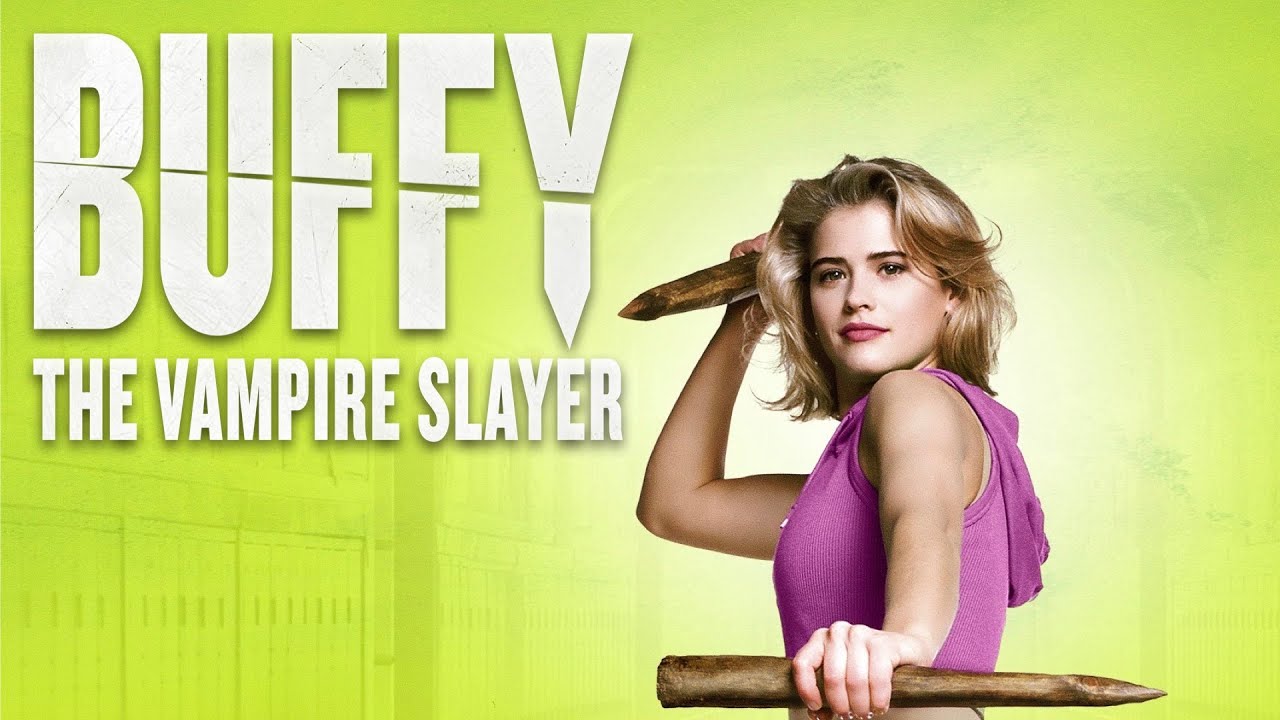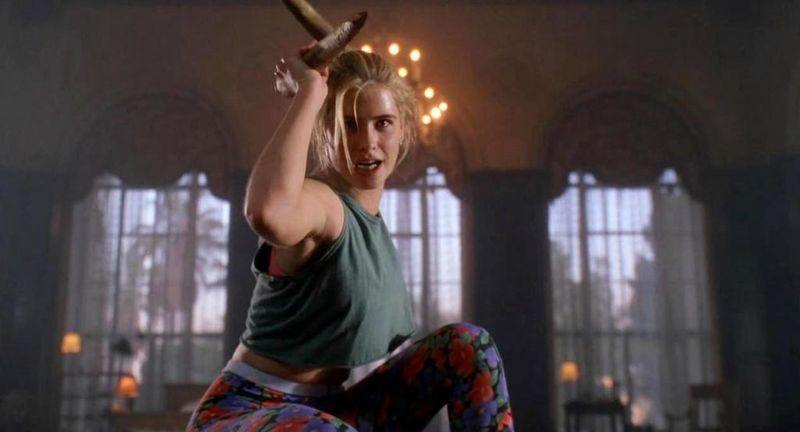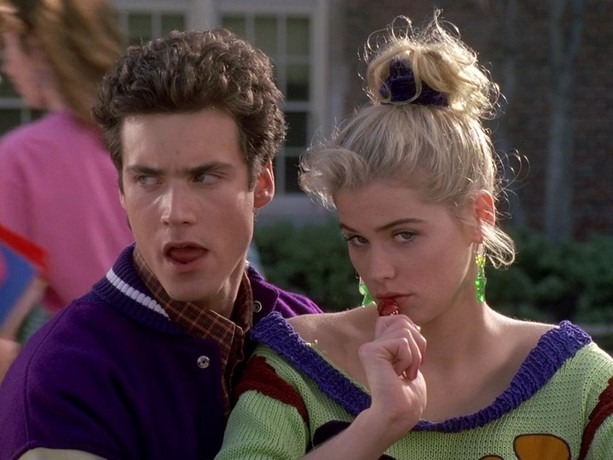Buffy the Vampire Slayer (1992)

Buffy the Vampire Slayer (1992), directed by Fran Rubel Kuzui and written by Joss Whedon, is a unique blend of comedy, horror, and teen drama. The film introduces audiences to Buffy Summers (Kristy Swanson), a seemingly typical high school cheerleader from a suburban neighborhood, who is suddenly thrust into the supernatural world as a vampire slayer. The movie has become a cult classic over the years, known for its witty dialogue, humorous approach to horror, and its unconventional take on the vampire genre. Although the film’s tone is light-hearted and campy, it also touches on deeper themes of identity, responsibility, and the transition from adolescence to adulthood.
At the heart of Buffy the Vampire Slayer is its protagonist, Buffy Summers. Kristy Swanson plays the role of Buffy with a mix of charm, sass, and humor. Buffy is initially unaware of her destiny as a “Slayer,” a chosen individual with the power to fight vampires, demons, and other supernatural threats. She is more interested in high school life, fashion, and hanging out with her friends than in saving the world from evil. However, when Buffy is guided by Merrick (Donald Sutherland), a mysterious and wise mentor, she starts to embrace her destiny. Her journey is a blend of typical teenage rebellion and a growing understanding of the responsibility that comes with her powers. Buffy’s transformation from a shallow, carefree girl into a confident and capable warrior is both humorous and inspiring, as she learns to balance her personal life with her supernatural duties.
The film is notable for its comedic tone and satirical take on the vampire genre. Rather than presenting vampires as dark, brooding figures, Buffy the Vampire Slayer turns them into exaggerated, sometimes ridiculous villains. The vampires in the movie are portrayed as cheesy, often campy, characters who are more comical than terrifying. This lighter approach to the genre is one of the film’s distinguishing features, as it embraces the absurdity of vampire lore while still maintaining the suspense and danger of Buffy’s mission. The campiness is heightened by the film’s over-the-top performances, including those of Paul Reubens as the eccentric vampire minion Amilyn and Rutger Hauer as the menacing yet theatrical vampire king, Lothos.
One of the key themes in Buffy the Vampire Slayer is the tension between Buffy’s normal teenage life and her supernatural responsibilities. Much of the comedy comes from Buffy’s attempts to balance these two worlds. While she is tasked with fighting vampires and saving the day, she still struggles with the typical issues of a teenage girl—boys, popularity, and high school drama. This conflict is portrayed with humor but also offers a deeper reflection on growing up and the sacrifices that come with stepping into adult roles. Buffy’s relationship with her friends, particularly her best friend, the energetic and somewhat naive Pike (Luke Perry), reflects the theme of loyalty and support that runs through the movie. Despite the supernatural chaos surrounding them, the core relationships are grounded in the everyday challenges of adolescence.

The film’s dialogue is another standout feature. Written by Joss Whedon, the script is filled with witty one-liners and clever banter that add a unique charm to the story. Whedon’s writing is self-aware, often poking fun at typical horror tropes while still respecting the genre’s conventions. Buffy’s sarcastic humor and the absurd situations she finds herself in add to the movie’s appeal. The memorable lines and quips, such as Buffy’s iconic line, “I’m a cheerleader, I’ve got style,” reflect her unapologetic attitude and ability to adapt to whatever bizarre situation she’s thrown into. The sharp, comedic tone has since become a hallmark of Whedon’s work, particularly in his later projects, including the Buffy the Vampire Slayer TV series, which expands on many of the themes and characters introduced in the film.

While Buffy the Vampire Slayer is primarily a comedy, it doesn’t shy away from darker, more serious moments. The film’s vampires, though largely comedic, still represent a threat to Buffy and her friends. The movie creates a balance between light-hearted humor and genuine danger, capturing the essence of what would become the Buffy series’ signature blend of horror and heart. There are moments of real tension, such as when Buffy faces off against the vampire king Lothos, that provide a sense of high stakes despite the film’s overall playful tone. The contrast between these moments of peril and the film’s comedic elements allows for a more dynamic viewing experience, making the film both fun and thrilling.

In conclusion, Buffy the Vampire Slayer (1992) is a film that has stood the test of time, not only for its unique take on the vampire genre but also for its memorable characters, witty dialogue, and clever mix of humor and horror. It set the foundation for the iconic Buffy the Vampire Slayer TV series that would expand on the character’s journey in a more dramatic and nuanced way, but the film itself remains a beloved cult classic. Kristy Swanson’s portrayal of Buffy, combined with Joss Whedon’s sharp writing and the film’s playful, satirical tone, makes Buffy the Vampire Slayer an enjoyable and entertaining ride. It’s a movie that doesn’t take itself too seriously but still delivers a powerful message about self-discovery, responsibility, and the power of friendship—all while kicking some vampire butt.











